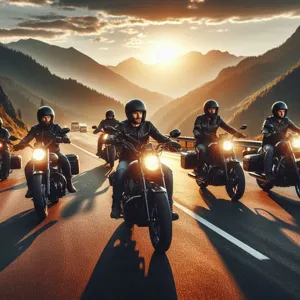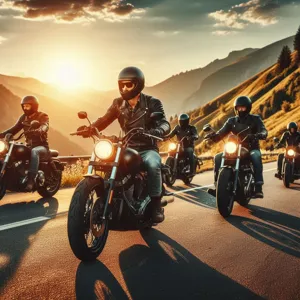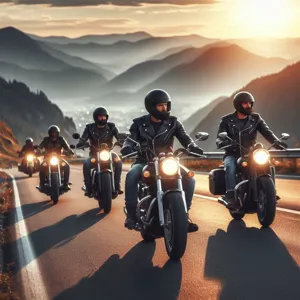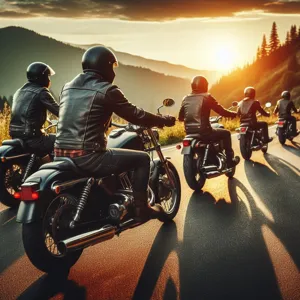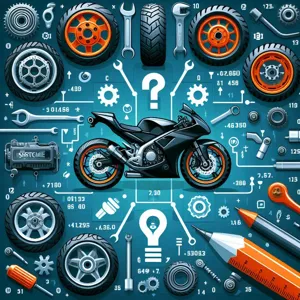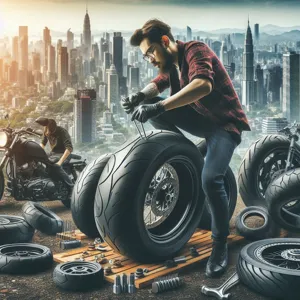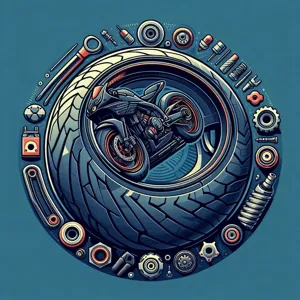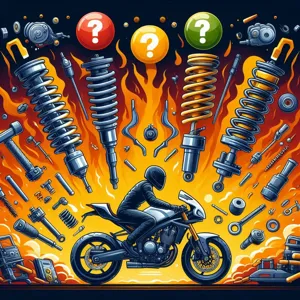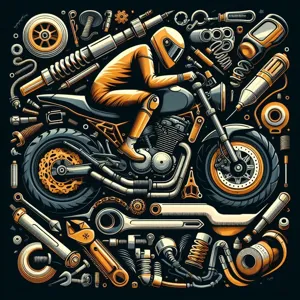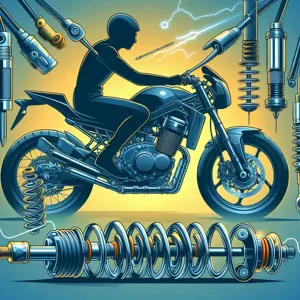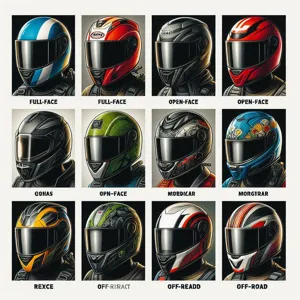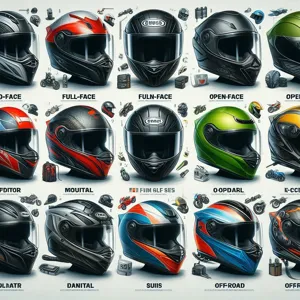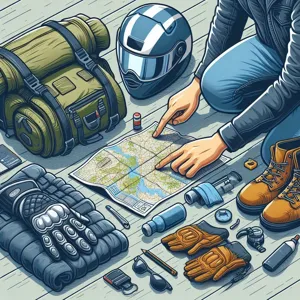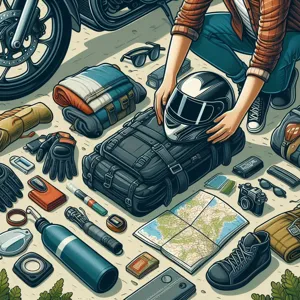Owning and riding a motorbike can be one of the most exhilarating experiences, offering a sense of freedom and adventure that few other modes of transportation can match.
However, before you hit the open road, it’s crucial to understand the legal landscape that governs motorbike ownership and riding. From obtaining the right licenses and insurance to adhering to safety regulations and local traffic laws, navigating the legal requirements can feel overwhelming for both new and seasoned riders alike. In this comprehensive guide, we’ll break down the essential legal requirements you need to know to ensure your riding experience is not only thrilling but also compliant with the law. whether you’re a first-time buyer or a long-time enthusiast, this post will equip you with the knowledge to ride confidently and responsibly, keeping you safe and secure on every journey.
1. Introduction to Motorbike Ownership and Legalities
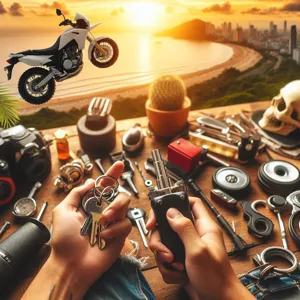
Motorbike ownership is an exhilarating journey, offering unparalleled freedom and a unique sense of adventure on the open road. However, before you rev up your engine and hit the asphalt, it’s crucial to understand the legal landscape surrounding motorbike ownership and riding. Navigating these legal requirements not only ensures your safety but also protects your investment and helps you avoid potential fines or legal issues.
Owning a motorbike comes with a specific set of responsibilities and regulations that vary from one region to another. From obtaining the right licenses and permits to understanding insurance requirements, the legalities of motorbike ownership can feel overwhelming at times. Whether you’re a seasoned rider or a newcomer to the biking community, being informed about these legal necessities is essential.
This section will guide you through the various aspects of motorbike ownership, including registration processes, license classifications, and the importance of comprehensive insurance coverage. We’ll also touch upon the rules of the road that every motorcyclist should be aware of, ensuring that you can navigate your riding experience with confidence and peace of mind. As we embark on this journey together, you’ll gain the knowledge needed to enjoy the thrill of motorbike riding while staying within the bounds of the law. So, let’s gear up and dive into the essential legal requirements that every motorbike owner and rider should know!
2. Understanding the Basics: Licenses and Permits
Navigating the world of motorbike ownership begins with a clear understanding of the legal licenses and permits required to ride legally and safely. The requirements vary significantly from one region to another, but the fundamental principles remain universal. At the heart of it all is the motorcycle license, which is essential for any rider looking to hit the open road.
Before you can even think about getting on a bike, it’s crucial to check the specific licensing requirements in your area. most jurisdictions require prospective riders to pass a written test that covers the rules of the road, safe riding practices, and motorcycle operation. This foundational knowledge is designed to ensure that all riders understand the responsibilities they have while maneuvering through traffic.
Once you’ve aced the written exam, the next step typically involves a practical skills test. This hands-on evaluation allows you to demonstrate your ability to handle a motorcycle in real-world conditions. It’s here that you’ll showcase your control over the bike, your understanding of traffic signals, and your ability to navigate various driving scenarios. Passing this test is a rite of passage for many motorcyclists and a crucial step toward obtaining your license.
In some regions, riders may be required to complete a motorcycle safety course before receiving their license. These courses not only provide valuable skills and safety tips but often lead to a reduction in insurance premiums, making them a smart choice for any new rider.
Additionally, it’s important to consider any permits you may need if you’re planning to ride a motorcycle with a learner’s permit or if you’re under the minimum age for a full license. These permits usually come with restrictions, such as no riding after dark or with a passenger, and understanding these limitations is essential for compliance with local laws.
Lastly, don’t forget to keep your paperwork in order. Maintaining a valid license, registration, and proof of insurance is not just a legal requirement; it offers peace of mind as you ride. Being well-informed and properly licensed is the foundation of responsible motorcycle ownership, paving the way for countless adventures on the open road.
3. State-Specific Regulations: What You Need to Know

When it comes to motorbike ownership and riding, one of the most crucial aspects to consider is the maze of state-specific regulations that govern everything from licensing requirements to helmet laws. Each state has its own unique set of rules, reflecting local attitudes toward safety, environmental concerns, and roadway usage. Failing to familiarize yourself with these regulations can lead to fines, legal troubles, or even accidents that could have been avoided with the proper knowledge.
start with the basics: licensing. While most states require a motorcycle endorsement on your driver’s license, the process can differ significantly. Some states mandate a written test and a practical riding examination, while others may offer a simpler process for experienced riders. Additionally, certain states have age restrictions, requiring younger riders to complete a motorcycle safety course before they can obtain their licenses.
Helmet laws are another area where regulations vary widely. In some states, wearing a helmet is mandatory for all riders, while others may only require helmets for younger or novice riders. There are also states where helmet use is completely optional, but it’s important to remember that even in these areas, wearing a helmet can significantly reduce the risk of serious injury in the event of an accident.
Insurance requirements also differ from one jurisdiction to another. Most states require at least a minimum level of liability insurance, but the specifics can vary. Some states may also mandate additional coverage types, such as uninsured motorist coverage or personal injury protection, to better safeguard riders against unforeseen circumstances.
Furthermore, be aware of regulations regarding modifications and aftermarket parts. Certain states have strict rules about exhaust systems, lighting, and even the overall appearance of your motorbike. Riding a vehicle that doesn’t comply with these regulations can lead to fines or even impoundment.
In addition, it’s wise to stay informed about any local ordinances that may affect where you can ride. Some cities impose restrictions on riding in certain areas or during specific times, particularly in densely populated urban environments.
Navigating state-specific regulations may seem daunting, but taking the time to understand the laws where you live and ride is essential for ensuring a safe and enjoyable motorcycling experience. Always consult your state’s Department of Motor Vehicles or equivalent authority for the most up-to-date information, and don’t hesitate to reach out to local motorbike communities for tips and insights. By educating yourself on these legal requirements, you can hit the road with confidence, knowing that you are both compliant and safe.
4. The Importance of Insurance for Motorbike Owners
When it comes to motorbike ownership, one of the most critical aspects to consider is insurance. Unlike a car, where the legal requirements for insurance are often straightforward, motorbike insurance can be a complex but essential component of your riding experience. Having the right insurance policy not only protects you financially but also provides peace of mind on the road.
First and foremost, motorbike insurance is a legal requirement in most jurisdictions. Riding without insurance can lead to hefty fines, loss of your riding privileges, and even legal repercussions. Furthermore, in the event of an accident, being uninsured could leave you personally liable for damages incurred, which can be financially devastating.
But insurance coverage goes beyond merely meeting legal obligations. It acts as a safety net, protecting you from unexpected financial burdens. Comprehensive insurance can cover a variety of scenarios—be it theft, vandalism, or damage caused by natural disasters. Moreover, if you’re involved in an accident, your policy can help cover medical expenses, repair costs, and any liability you may have towards other parties involved.
When shopping for insurance, it’s crucial to understand the different types of coverage available. Basic liability insurance is often the minimum requirement, but considering additional coverage options like collision, comprehensive, and uninsured/underinsured motorist protection can significantly enhance your safety net.
Additionally, insurance premiums can vary widely based on factors such as your age, riding experience, the type of bike you own, and even your location. Taking the time to compare policies and shop around can lead to significant savings and ensure that you find the right coverage that fits your needs.
In summary, investing in the right insurance policy is not just about compliance—it’s about safeguarding your investment and well-being on the road. Riding a motorbike should be an exhilarating experience, and with proper insurance in place, you can focus on enjoying the journey, knowing you’re protected against the unexpected twists and turns that life may throw your way.
5. Vehicle Registration: Steps and Requirements

When it comes to owning a motorbike, understanding the vehicle registration process is crucial for both legal compliance and peace of mind. Vehicle registration serves as your official proof of ownership and is essential for riding your motorbike on public roads. The steps and requirements for registration can vary by state or country, but there are some common elements you should be aware of.
**1. Gather Necessary Documentation:**
Before you dive into the registration process, ensure you have all the required documents at hand. Typically, you’ll need proof of identity (like a driver’s license), the motorbike’s title, a bill of sale if the bike is newly purchased, and sometimes a safety inspection certificate. Additionally, be prepared to provide proof of insurance, as most jurisdictions require you to have coverage before you can register your bike.
**2. Visit Your Local DMV or Registration Office:**
Once you have your documents ready, head to your local Department of Motor Vehicles (DMV) or the equivalent registration authority. It’s advisable to check if you need to make an appointment in advance, as some offices can become quite busy, especially on weekends.
**3. Complete the Application Form:**
At the DMV, you will be required to fill out an application form for vehicle registration. This form typically asks for details about your motorbike, including its make, model, year, Vehicle Identification Number (VIN), and odometer reading. Make sure to double-check your information for accuracy to avoid any delays.
**4. Pay the Registration Fee:**
Registration is not free, so be prepared to pay a fee, which may vary based on factors like your location and the engine size of your motorbike. Payment methods may differ, so check in advance if the office accepts cash, credit cards, or checks.
**5. Receive Your Registration and License Plate:**
Once you’ve submitted your documents and paid the fees, the DMV will process your application. If everything is in order, you’ll receive your official registration documents, which you should keep in a safe place, and a license plate if applicable. Remember to attach the plate securely to your motorbike, as riding without one can result in fines.
**6. Keep Your Registration Current:**
After registration, it’s important to stay on top of renewal dates and any changes in your ownership status, such as selling the bike or moving to a new address. Most jurisdictions offer online services for renewing your registration, making it more convenient to keep your motorbike compliant with local laws.
By understanding the vehicle registration process and having your essentials in order, you can ensure that your motorbike ownership experience is smooth and hassle-free. With your registration completed, you’ll be one step closer to hitting the open road with confidence and legality.
6. Safety Gear: Legal Requirements and Recommendations
When it comes to motorbike ownership and riding, safety gear is not just an important consideration for your personal protection; it’s also intertwined with legal requirements that vary by region. Understanding these stipulations is crucial for both novice and seasoned riders alike.
Most jurisdictions mandate the use of a helmet that meets specific safety standards. While the type of helmet may differ—full-face, modular, or open-face—the key is ensuring that it has undergone proper testing and certification. A well-fitted helmet can significantly reduce the risk of head injuries, making it a non-negotiable piece of equipment for any rider.
Beyond helmets, many areas also enforce additional safety gear regulations. This often includes high-visibility clothing, gloves, and protective jackets crafted from durable materials like leather or specialized textiles. These items not only enhance safety by providing abrasion resistance in the event of a fall but also increase visibility on the road, which is crucial for avoiding accidents.
While legal requirements are a starting point, riders should consider additional protective gear that may not be mandated but is highly recommended. Items such as knee and elbow guards, reinforced riding pants, and sturdy boots can offer extra protection against the elements and potential injuries in case of an accident.
Additionally, investing in reflective gear or accessories can further enhance your visibility, especially during low-light conditions or inclement weather.
Always remember, while the minimum legal requirements provide a baseline for safety, going above and beyond with your gear can not only protect you but also instill confidence in your riding experience. After all, the road can be unpredictable, and being prepared is key to navigating it safely.
7. Understanding Traffic Laws for Motorcyclists
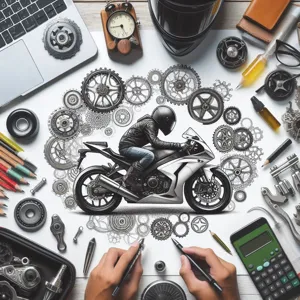
Understanding traffic laws for motorcyclists is crucial not only for your safety but also for the safety of others on the road. Motorbike riders are often more vulnerable than their four-wheeled counterparts, making it essential to be well-versed in the regulations that govern their behavior on the streets.
Each state and country has its own set of traffic laws, and these can vary significantly. From speed limits to lane splitting, it’s vital to familiarize yourself with the rules specific to your region. For instance, some places allow lane splitting, where motorcyclists can ride between lanes of slow-moving or stopped traffic, while others strictly prohibit it. Not adhering to these laws can lead to fines and, more importantly, dangerous situations on the road.
Additionally, understanding the nuances of right-of-way rules can help prevent collisions. Many drivers may not be as attentive to motorbikes, so it’s crucial to know when you have the right to proceed and when to yield. This knowledge not only enhances your riding skills but also builds your confidence as you navigate through traffic.
Don’t overlook the importance of wearing appropriate gear, as some regions have laws requiring specific safety equipment such as helmets and reflective clothing. Being compliant with these regulations not only protects you but also shows your commitment to safe riding practices.
Finally, keeping up-to-date with any changes in traffic laws is essential. Regulations can evolve due to new findings on road safety or changes in public policy, and staying informed ensures you remain a responsible and lawful rider. By taking the time to understand and adhere to traffic laws, you’re not just protecting yourself; you’re contributing to a safer riding environment for everyone.
8. The Role of Helmets: Legal Mandates and Safety Benefits
When it comes to motorbike ownership and riding, one of the most critical aspects to understand is the role of helmets. Not only do helmets serve as a vital piece of safety equipment, but they are also subject to legal mandates that vary from region to region. In many jurisdictions, wearing a helmet while riding is not just a recommendation; it’s a legal requirement. Failing to comply with this mandate can result in hefty fines, points on your driving record, and, most importantly, an increased risk of injury in case of an accident.
The legal standards for helmets can differ widely, with some areas enforcing strict regulations that specify the type of helmet that must be worn. For instance, certain states may only recognize helmets that meet specific safety certifications, ensuring they provide adequate protection. Therefore, it’s crucial for riders to familiarize themselves with their local laws to ensure compliance and safeguard their well-being.
Beyond the legal implications, the safety benefits of wearing a helmet cannot be overstated. Studies consistently show that helmets significantly reduce the risk of head injuries in the event of a crash. They are designed to absorb impact and protect vulnerable areas of the skull, effectively acting as a barrier between a rider’s head and the hard surface of the road. Furthermore, modern helmets are equipped with advanced technologies, such as anti-fog visors and communication systems, enhancing both safety and convenience.
Choosing the right helmet involves more than just meeting legal standards; it requires an understanding of fit, weight, and style. A properly fitting helmet should feel snug but comfortable, providing maximum protection without causing fatigue during long rides. Riders should also consider the type of riding they engage in—whether it’s commuting, touring, or off-roading—as different activities may necessitate different helmet designs.
Ultimately, helmets serve as a quintessential element of motorbike safety. By adhering to legal requirements and prioritizing safety features, riders not only protect themselves but also contribute to a culture of responsible riding. So, before hitting the road, make sure your helmet is up to standard—your safety and legal compliance depend on it.
9. Emissions and Safety Standards: What to Comply With
When it comes to motorbike ownership and riding, compliance with emissions and safety standards is not just a legal obligation; it’s a commitment to responsible riding and environmental stewardship. Each country and region has its own set of regulations that dictate the allowable emissions for motorbikes, which are designed to mitigate the impact of vehicle pollution on air quality. Understanding these standards is essential for any motorcyclist looking to stay on the right side of the law.
Most modern motorcycles are equipped with technology that helps reduce harmful emissions, such as catalytic converters and fuel injection systems. However, if you’re considering purchasing a used bike, it’s crucial to check whether it meets the current emissions standards in your area. Not only could riding a non-compliant bike result in hefty fines, but it can also prevent you from registering your vehicle or passing inspections, limiting your ability to legally ride on the road.
In addition to emissions, safety standards play a pivotal role in ensuring that your motorbike is roadworthy. These standards typically cover aspects such as lighting, braking systems, tire quality, and overall structural integrity. Before hitting the road, make sure that your motorcycle adheres to these regulations. Regular maintenance checks can help you identify potential issues and keep your bike in compliance.
Furthermore, many regions require riders to wear specific safety gear, such as helmets, gloves, and protective clothing, to enhance personal safety and reduce the risk of injury in the event of an accident. Familiarizing yourself with these legal requirements not only protects you from penalties but also significantly contributes to your safety as a rider.
By understanding and complying with emissions and safety standards, you not only safeguard your own riding experience but also contribute to a collective effort towards cleaner air and safer roads. Staying informed about these regulations will empower you to enjoy your motorbike to the fullest while being a responsible member of the riding community.
10. Maintenance Records and Legal Implications
Maintaining your motorbike is not only crucial for ensuring optimal performance and safety but also carries significant legal implications that every owner should be aware of. Keeping detailed maintenance records can serve as your shield in case of disputes, accidents, or inspections. In many regions, law enforcement and insurance companies may require proof of regular maintenance to validate claims or assess liability.
When you invest in a motorbike, you take on the responsibility for its upkeep. This includes routine tasks such as oil changes, tire checks, brake inspections, and more specialized maintenance as recommended by the manufacturer. Documenting these services—whether performed by a certified mechanic or yourself—creates a comprehensive maintenance log that can be invaluable if you ever need to demonstrate that your bike was well cared for.
In the unfortunate event of an accident, being able to present a history of proper maintenance can significantly impact the outcome of insurance claims. It can help prove that your bike was in safe operating condition at the time of the incident, potentially shielding you from liability and increasing your chances of receiving compensation for damages. Conversely, neglecting maintenance could be cited as a contributing factor in accidents, leading to legal repercussions and increased insurance premiums.
Additionally, some regions have specific laws mandating that motorbikes meet certain mechanical standards to be roadworthy. Failing to adhere to these regulations can result in fines, penalties, or even the suspension of your riding privileges. By keeping meticulous records, you not only protect yourself legally but also foster a culture of responsibility that can enhance your riding experience.
Ultimately, maintaining thorough maintenance records is a smart practice that serves dual purposes: it acts as proof of diligence in care and helps ensure your motorbike remains a safe and reliable mode of transportation. Take the time to document every service, repair, and inspection; it’s a small investment of effort that can pay off significantly in terms of legal protection and peace of mind.
11. Navigating Legal Consequences of Accidents
When it comes to motorbike ownership and riding, understanding the legal consequences of accidents is crucial for every rider. Despite your best efforts to ride safely, accidents can happen, and being prepared for the aftermath can make all the difference.
First and foremost, it’s essential to be aware of your legal obligations immediately following an accident. In many jurisdictions, you are required to stop, provide your information to the other party involved, and seek medical assistance if needed. Failing to do so can result in serious penalties, including fines and potential criminal charges, especially if there are injuries involved.
Once you’ve ensured that everyone is safe and exchanged information, understanding how liability is determined can be complex. Insurance companies will assess the circumstances surrounding the accident, including traffic laws, witness statements, and even weather conditions. In some cases, fault may be shared between parties, which could significantly affect your insurance premiums and potential payouts.
In addition to liability, it’s vital to grasp the implications of your insurance coverage. Depending on your policy, you may have coverage for medical expenses, property damage, and liability claims. Familiarizing yourself with these details will help you navigate the claims process more smoothly and ensure that you are adequately protected.
Moreover, if the accident leads to legal action, whether it’s a personal injury lawsuit or a dispute with your insurance provider, having a solid understanding of the laws governing motorbike accidents in your area is essential. Consulting with a legal professional who specializes in motorcycle law can provide you with invaluable guidance and representation, ensuring that your rights are protected.
Lastly, consider the mental and emotional toll that an accident can take. The legal process can be daunting, but it’s important to prioritize your well-being throughout this journey. Many riders find support groups or counseling beneficial for coping with the stress and anxiety that can arise from such experiences.
Navigating the legal consequences of accidents is a challenging aspect of motorbike ownership, but with the right knowledge and preparation, you can protect yourself and ride with confidence, knowing you’re equipped to handle whatever the road may throw your way.
12. Rights and Responsibilities of Motorbike Riders
Motorbike riding is not only an exhilarating experience; it also comes with a unique set of rights and responsibilities that every rider must understand and embrace. As a motorbike owner, you are part of a vibrant community that values freedom and adventure, but with that freedom comes the obligation to adhere to the laws designed to ensure safety on the roads.
**Understanding Your Rights**
As a motorbike rider, you have the right to navigate public roads and highways just like any other vehicle. This includes the right to operate your bike in designated lanes, the right to receive fair treatment from law enforcement, and the right to enjoy the open road without undue harassment. Moreover, riders have the right to access information about local traffic laws and safety regulations, ensuring they are well-informed and compliant.
**Embracing Your Responsibilities**
With rights come responsibilities. Riders must ensure they are fully licensed to operate their motorcycles, which often includes passing a riding test and adhering to specific age requirements. Additionally, wearing appropriate safety gear—such as helmets, gloves, and protective clothing—is not just a best practice; in many jurisdictions, it is a legal requirement.
Motorbike owners must also maintain their vehicles in good working order, which includes regular inspections of brakes, lights, and tires. This not only helps ensure your safety but also contributes to the safety of others on the road. Being aware of and respecting traffic laws, including speed limits and signaling turns, is critical. Riders must also be vigilant about the actions of other drivers, as awareness and defensive driving can help prevent accidents.
Furthermore, it is essential to understand your legal rights in the event of an accident. This includes knowing how to report incidents, gather evidence, and seek compensation for damages or injuries. Familiarizing yourself with insurance policies specifically tailored for motorbike riders can provide peace of mind and financial protection.
In conclusion, while the thrill of riding a motorbike offers unmatched freedom, it is crucial to be aware of the accompanying rights and responsibilities. By embracing these, you not only protect yourself but also contribute to a safer and more respectful riding community. Awareness, preparation, and adherence to the law will help you enjoy the open road to its fullest, all while ensuring the safety of yourself and those around you.
13. Resources for Staying Updated on Legal Changes
Staying informed about legal requirements for motorbike ownership and riding is crucial for every motorcyclist. Laws and regulations can change frequently, and being caught off guard can lead to fines, penalties, or even worse consequences. To help you navigate this ever-evolving landscape, there are several valuable resources at your disposal.
**Government Websites**: One of the best places to start is your state’s Department of Motor Vehicles (DMV) website. Most DMVs offer a wealth of information on licensing requirements, safety regulations, and any recent changes in the law. Additionally, the National Highway Traffic Safety Administration (NHTSA) provides national guidelines and updates pertinent to motorbike riders, making it a great resource for understanding broader safety initiatives.
**Motorcycle Advocacy Groups**: Organizations like the Motorcycle Safety Foundation (MSF) and the American Motorcyclist Association (AMA) are dedicated to promoting safe riding practices and safeguarding rider rights. These groups often publish newsletters, blogs, and reports that discuss legislative changes and advocate for motorcyclist-friendly laws. Becoming a member can also provide access to exclusive resources and events.
**Social Media and Online Forums**: Engaging with the motorbike community on platforms like Facebook, Reddit, and dedicated motorcycle forums can provide real-time updates and discussions about legal changes. Fellow riders often share their experiences and insights regarding new laws, making these platforms invaluable for grassroots information.
**Legal Blogs and Websites**: Several legal experts and firms specialize in motorcycle law. Following their blogs or subscribing to their newsletters can help you stay informed about relevant legal updates, safety tips, and best practices for compliance. Many of these resources also offer practical advice on how to navigate legal challenges you may encounter as a rider.
**Local Riding Clubs**: Joining a local riding club can also serve as an excellent resource. These clubs often hold meetings and events where legal experts might present on current issues affecting riders in your area. Networking with experienced riders can also provide insights into how they stay compliant with the law.
By leveraging these resources, you can ensure that you remain knowledgeable about the legal landscape surrounding motorbike ownership and riding. Staying updated not only keeps you compliant but also enhances your overall riding experience, allowing you to focus on enjoying the open road with confidence.
14. Tips for Safe Riding Within Legal Boundaries
Navigating the exhilarating world of motorbike riding is not just about the thrill of the open road; it’s also about understanding and adhering to the legal requirements that keep both you and others safe. As a motorbike owner, you must prioritize safety while ensuring compliance with the law. Here are some essential tips for safe riding within legal boundaries that can enhance your experience and protect your well-being.
First and foremost, always wear the appropriate safety gear. This includes a DOT-approved helmet, gloves, jackets, and boots specifically designed for riding. Not only do these items protect you in case of an accident, but wearing them is often a legal requirement in many jurisdictions. Make it a habit to check your gear for wear and tear before every ride.
Next, familiarize yourself with the traffic laws specific to motorbikes in your area. Regulations can vary significantly from one state or country to another, so understanding the rules of the road—such as lane splitting, maximum allowable speeds, and parking regulations—is crucial. Additionally, be aware of any special licensing requirements, as some locations mandate that riders obtain a motorcycle endorsement or complete a safety course before hitting the road.
Before you set off, ensure that your motorbike is in optimal condition. Regular maintenance checks, including fluid levels, tire pressure, and brake functionality, not only keep your bike running smoothly but also ensure compliance with safety standards. Keep a record of your maintenance activities, as this can be beneficial if you ever need to demonstrate that you’re operating a well-maintained vehicle.
Staying visible is another critical aspect of safe riding. Use reflective clothing and gear, and ensure your bike is equipped with functional lights and reflectors. Riding defensively is essential; always assume other drivers may not see you, and be cautious at intersections. Signal your intentions clearly and be mindful of blind spots.
Finally, consider joining a motorbike community or club. Engaging with fellow riders can provide invaluable insights into safe riding practices and the latest legal updates. Participating in group rides can also enhance your skills and foster a sense of camaraderie while keeping safety at the forefront.
By following these tips, you’ll not only enhance your riding experience but also ensure you are within the legal framework designed to protect everyone on the road. Embrace the freedom of motorbike riding responsibly, and enjoy the journey ahead!
15. Conclusion: Staying Informed and Responsible as a Motorcyclist
In conclusion, navigating the complexities of motorbike ownership and riding requires a commitment to staying informed and responsible. As a motorcyclist, you are part of a vibrant community that thrives on the freedom and thrill that two wheels can provide. However, with this freedom comes a significant responsibility to understand and adhere to the legal requirements that govern your riding experience.
Being informed means regularly updating your knowledge about local laws, safety regulations, and best practices for riding. This includes staying updated on licensing requirements, insurance policies, and safety gear standards. Laws can vary significantly from one region to another, so it’s essential to do your research and ensure that you are compliant. Moreover, staying informed helps you make educated decisions about your motorcycle maintenance and upgrades, ensuring that your bike is in optimal condition for safety and performance.
Responsibility as a motorcyclist extends beyond just knowing the rules; it encompasses a commitment to safety. Always wear appropriate protective gear, such as helmets, jackets, and gloves, and never ride under the influence of alcohol or drugs. Participate in rider training courses to enhance your skills and confidence on the road. By prioritizing safety, you not only protect yourself but also set a positive example within the motorcycling community.
Ultimately, the journey of motorbike ownership and riding is one of continuous learning. Embrace the experience of being a motorcyclist by engaging with fellow riders, joining clubs, and attending events that promote safe riding practices. By staying informed and responsible, you can enjoy the exhilarating ride while contributing to a safer and more conscientious motorcycling culture. Ride safe, stay knowledgeable, and enjoy the open road ahead!
In conclusion, navigating the legal landscape of motorbike ownership and riding is crucial for ensuring not only your safety but also compliance with the laws that govern our roads. By understanding the essential requirements—from obtaining the necessary licenses and registrations to adhering to insurance mandates and safety regulations—you equip yourself with the knowledge needed to enjoy your riding experience fully. As you rev up your engine and hit the open road, remember that being well-informed is as important as the thrill of the ride itself. We hope this guide has provided you with valuable insights to help you ride confidently and responsibly. Stay safe, and enjoy the freedom of the journey ahead!

